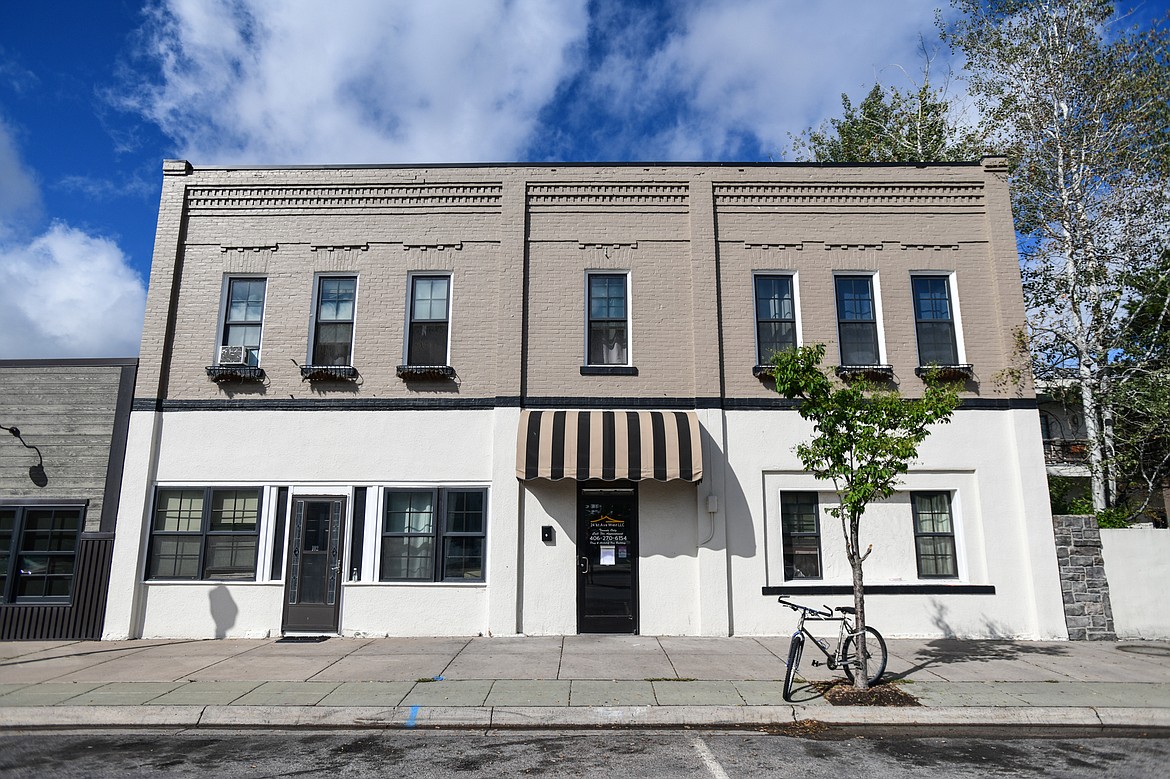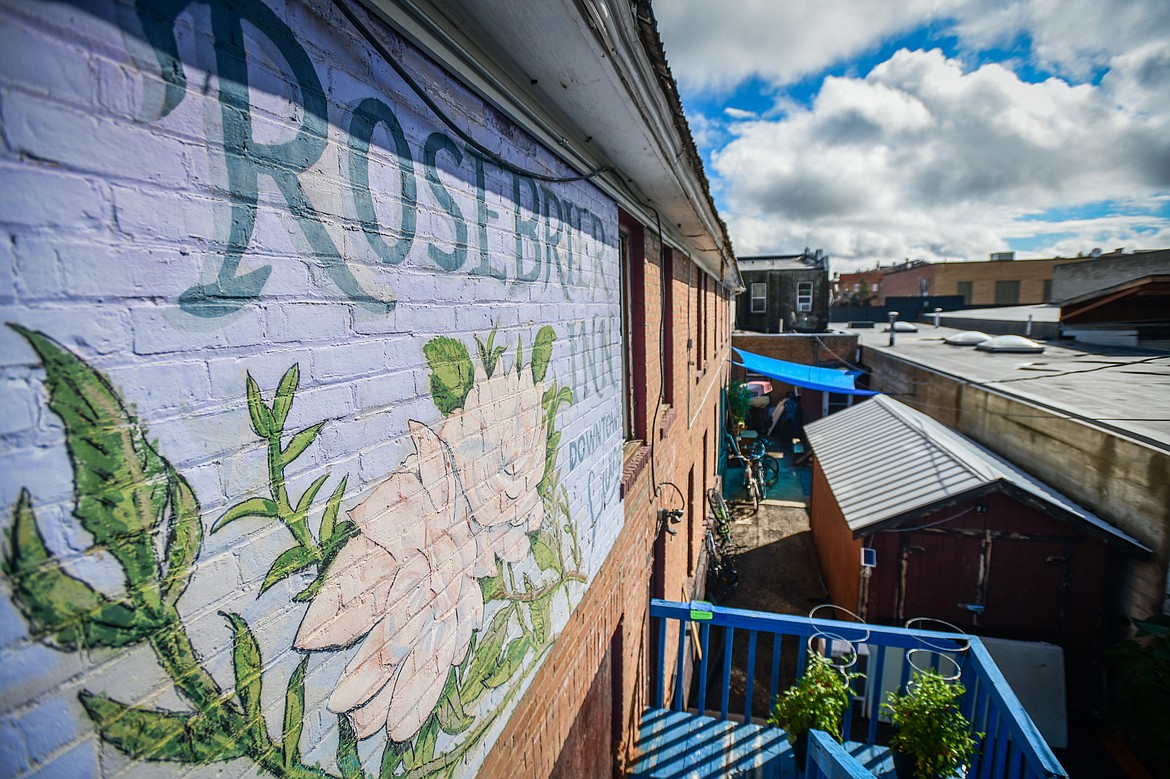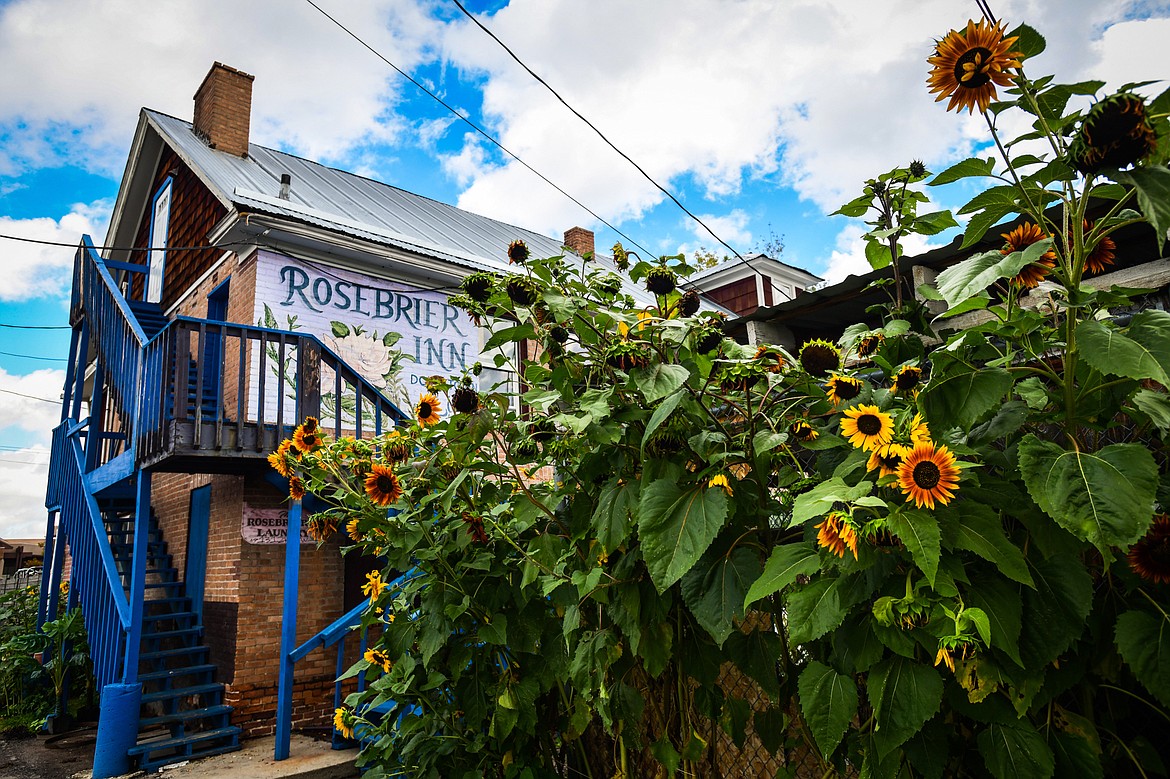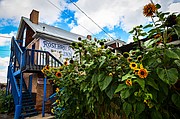Kalispell boarding house offers affordable rent in community setting
ADRIAN KNOWLER | Hagadone News Network | UPDATED 2 years, 4 months AGO
The former Rosebrier Inn is a glimpse into Kalispell’s past — and perhaps can offer clues in the search for solutions to the city’s affordable housing and homelessness crises.
Kalispell’s last remaining boarding house might not look like much, but the building is quietly playing an important role in providing affordable housing to people who might otherwise be living on the city’s streets.
Located on First Avenue West, the building has a long history of offering modest and affordable rooms — now often referred to as “single-room occupancy” accommodations.
A standard room in the building goes for $500 per month, with access to shared bathrooms, laundry machines and a kitchen. The building also offers dormitory-style lodging for a monthly fee of $200.
Owner Catherine Potter bought the building in 2020, and said the building — which she claims is the oldest continuously operating business in Kalispell — has sheltered everyone from “Bonnie and Clyde types,” to renowned Glacier National Park landscape photographer T.J. Hileman.
The building was built in 1903, and served as the city’s hospital from 1905 until 1909, according to information filed with the National Register of Historic Places.
When Hileman stayed in the building in 1911, rooms were rented out for $1 per night.
It operated under the name Hotel Norden until around 1955, a period during which a mural on the building boasted that its corridors were lined with the “finest rooms in [the] city.”
These days, the building is showing its age, but housing policy experts and social workers say it still provides much-needed low-income housing in an area that has seen housing costs skyrocket over the past several years.
BUILDING MANAGER Dick Dilka thinks the building provides an opportunity for tenants to flourish with some affordable and stable accommodations. He said he’s proud to give tenants a “second chance” as long as tenants with criminal convictions are upfront with him about their past on their applications. The building’s rules prohibit drugs or alcohol on the premises.
For Dilka, the building represents his own second chance. In 2009, Dilka pleaded guilty to a charge stemming from two convenience store robberies and spent seven years on probation.
Although he now lives down the street, he has called the boarding house home on and off since his conviction.
Dilka recalled a tenant who lived in the building for over 25 years, and said that about a dozen have lived there for a decade or more. He described the tenants as a family.
“There are people here that would take a bullet for each other,” he said.
Dilka said that many of the tenants would be made homeless if the boarding house were to shut its doors.
“They’d be out on the street or crashing on couches,” he said. “There’s not another option.”
Ron Schooler had been homeless off and on for about a decade after serving six years in the military.
Before moving into the boarding house last fall, Schooler, who grew up in Flathead County, lived in homeless shelters and on Kalispell’s streets.
Schooler said that getting a room in the former Rosebrier has allowed him to get and keep a stable job at Domino’s Pizza, where he is on track to become a manager.
“It makes going to work easier because I can actually have a shower before going to work,” he said.
“I think it’s a great way for someone who’s serious about making their life better to open the door to be able to do that,” said Schooler. “[Dilka] helped me transition from being homeless to where I’m at now. He helped me out a lot. I don’t know if he knows how much he actually helped me out.”
Schooler says that his room’s low cost will allow him to rent his own apartment in the next few months.
“It’s fine for me for now,” he said. “I'm going to want to move into an apartment at some point, but I want to make sure that I can afford it. The Rosebrier gives me a spot to have a roof over my head and save money.”
Local housing advocate Cassidy Kipp thinks that boarding house-style accommodations fill an important niche in the area’s housing market. Kipp administers local low-income housing programs as deputy director of Community Action Partnership of Northwest Montana.
She said single-room occupancy buildings are especially well suited for people with disabling conditions and late-stage illnesses because they are able to keep up with minimal chores and have neighbors looking out for them.
Kipp thinks the layout in boarding houses can foster both camaraderie and accountability. Kipp recalled volunteering in the building in the 1980s, when the former Rosebrier served as a de facto drug and alcohol detox center.
“I love that model and there’s a lot to be said about it,” Kipp said. “A central hub and private rooms that you’re able to retreat to [creates] a soft support system that has a lot of benefits.”
BOARDING HOUSES used to be very popular in American cities before zoning regulations, changing attitudes and the post-war housing boom made them the rarity they are today.
Between a third and half of Boston’s population lived in boarding houses — also known as rooming houses — during the 19th century, according to the Boston Globe. For many people, the accommodation simply made sense: they were often centrally located, affordable, and offered flexible terms.
The buildings and their residents had critics, however.
A 1957 report by the American Society Of Planning Officials called boarding houses “notorious as both symptoms and causes of neighborhood decay.”
A St. Louis Post Dispatch article from the same year called on planners to tighten zoning policies restricting where such dwellings could be built.
“Rooming houses are not compatible with one- and two-family districts,” the article reads. “When the rooming houses come in, the families move out — and the whole area starts down hill. If St. Louis is to retain its many fine family neighborhoods, the rooming houses will have to be kept where they belong.”
Throughout the 20th century, cities used zoning and planning policies to enact "uniform and protected single-use residential district[s] of private houses,” according to “Living Downtown: The History of Residential Hotels in the United States.”
Kalispell’s zoning code currently allows for single-room occupancy accommodations to be built wherever residential construction is permitted, according to Jarod Nygren, Kalispell’s planning director. Anecdotally, Nygren said that he has seen an increasing number of single people moving into apartments with roommates to split the rent. The trend leads him to believe that single-room occupancy development may be on the rise again in the near future.
Kipp says that developers looking to build this kind of affordable housing face multiple challenges, including high construction costs and pushback amongst residents who, echoing opponents in decades prior, don’t want to see boarding houses in their neighborhoods.
Developers looking to build up-to-date affordable housing must keep construction costs low — around $200 per square foot — to allow for below-market rate rents like those at the former Rosebrier, Kipp said, a challenge in today’s economic climate.
Kipp is encouraged by modern construction techniques, such as assembling modular, prefabricated units to keep costs down and allow developers to charge rates similar to those at the former Rosebrier.
Rent at $500 per month is about 75% of the current market rate for a one-bedroom apartment in the area as defined by the Department of Housing and Urban Development. In reality, housing is even more expensive, with online searches for rentals showing that finding a one-bedroom apartment in the city for less than $1,200 per month is a challenge.
There’s certainly demand for affordable housing in the area.
Kalispell has only 460 units of dedicated deed-restricted rentals funded by the Montana Board of Housing low-income tax credits, of which 106 are owned by Community Action Partnership. Kipp said that nearly 12,000 people in Flathead County are living in poverty, citing census data.
Motel rooms rented on a weekly basis are still an option for many who can’t afford to rent a traditional apartment in Kalispell, but when summer demand drives room prices up, many, even with full-time jobs, are back on the streets. Motels offering monthly rentals are disappearing, with the former Blue and White Motel and Outlaw Inn each closing in the last two years, displacing hundreds of tenants.
“There’s a disparity between [available] affordable housing and people living in poverty. We need some solutions that are not traditional, like the Rosebrier,” Kipp said. “If we could have models like that elsewhere it really could take a chunk out of some of the housing needs.”
She also said that changing public discourse around affordable housing is necessary to spur new single-room occupancy development.
Kipp said the stigma that the type of housing is only for drug addicts or criminals still exists today, but that there are lots of people who would choose housing that offers fewer amenities than traditional apartments.
In December, a proposed faith-based sober living home for half a dozen men met outcry at a public planning board meeting. Residents feared that the single-room occupancy home would cause a spike in crime and hurt their property values.
“We need to dispel those misconceptions that [people live in boarding houses] because they can't conform to what is normal or expected,” she said. “Oftentimes those [non-traditional] models are more dynamic to meet people’s needs. For a lot of folks, it’s the ideal arrangement.”
ALTHOUGH THE building’s comforts may not compare with the luxury condominiums that have been seen sprouting up in Kalispell the last few years, Kipp says the building fills an important niche in the area’s housing market.
She said that because the former Rosebrier is so old, it likely has not been required to meet modern planning standards, allowing the owners to keep rents below market rate.
Owner Catherine Potter says cosmetic improvements are difficult to fund as long as she charges below-market rates. She said she’d rather provide housing than extract the maximum return on her investment.
“Fully modernizing the building, if budget allowed, would first force me to displace all of the guests at once,” she said. “I'm sure another owner would be interested in that, but I like our guests, and I want to see them have a place to live.”
Potter and Dilka are glad to see that tenants have taken the initiative to beautify the space in their own ways.
Dilka has encouraged tenants to make the most of the alley behind the building, and tenants have created a thriving garden, cultivating tomatoes, chives, onions, potatoes, peas and sunflowers.
He said that by tending to the garden, the tenants are investing in their community and themselves.
“It doesn’t matter what’s planted,” Dilka said. “We’re growing things instead of destroying things.”
Reporter Adrian Knowler can be reached at 758-4407 or [email protected].
ARTICLES BY ADRIAN KNOWLER

Kalispell boarding house offers affordable rent in community setting
Kalispell’s last remaining boarding house might not look like much, but the building is quietly playing an important role in providing affordable housing to people who might otherwise be living on the city’s streets.

Kalispell boarding house offers affordable rent in community setting
Kalispell’s last remaining boarding house might not look like much, but the building is quietly playing an important role in providing affordable housing to people who might otherwise be living on the city’s streets.

Kalispell City Council finalizes $141M budget
Kalispell City Council approved the municipality’s $141 million budget and mill levy for fiscal year 2024 on Monday.





